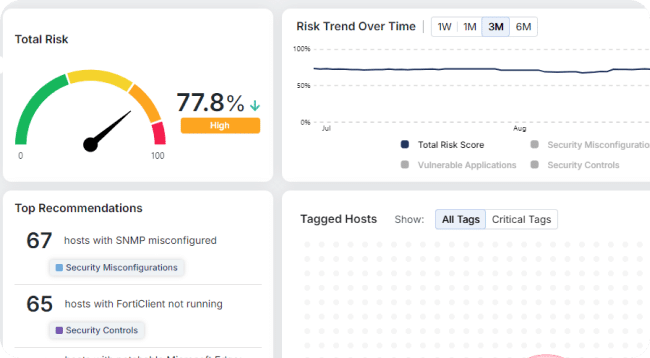Supply Chain to SSH Keys: The Expanding Arsenal of Linux Ransomware Threats

Ransomware doesn’t just come through software vulnerabilities anymore.
Today’s attackers are blending credential theft, AI-powered phishing, and poisoned open-source packages to compromise Linux systems in unexpected ways—making the threat landscape broader, more sophisticated, and much harder to defend.
Let’s break down how these evolving threats penetrate your environment—and why deterministic prevention, like memory shielding and zero-trust execution, is the only reliable way to stop stealthy payloads before they execute.
Human-Driven Entry Points: Phishing, SSH Keys, and Backdoors
Attackers are increasingly targeting the people and processes behind Linux systems, exploiting SSH credentials and leveraging backdoors to gain access without triggering alarms.
A stark example of this came in 2025 with the discovery of Plague, a stealthy Linux backdoor hiding within a malicious PAM (Pluggable Authentication Module). Once embedded, it bypassed SSH login requirements and allowed attackers to authenticate remotely using hardcoded credentials, all while evading traditional detection methods.
This kind of credential abuse isn’t theoretical; phishing emails and exposed keys in public repositories are being harvested and reused to compromise sensitive Linux environments with ease. Add AI-generated phishing into the mix, and adversaries are now deploying more convincing campaigns that trick even security-aware users into handing over SSH keys or admin access.
Connected Devices as Attack Vectors: IoT and Industrial Targets
The Linux operating system is deeply embedded in the fabric of connected devices, including IoT endpoints, surveillance cameras, and industrial control systems. These devices are often deployed without sufficient hardening or patch management, making them easy entry points for attackers.
In 2025, a campaign involving a new strain of malware called PumaBot exploited this weakness by targeting Linux-powered IoT devices. The botnet retrieved IP targets from a command-and-control server, brute-forced SSH credentials, and used native Linux services to establish persistence and deploy cryptominers like XMRig. Once compromised, these devices not only served as mining rigs but also opened paths for deeper penetration into enterprise networks.
As more Linux-based devices come online—often with minimal oversight or outdated firmware—the potential for ransomware operators to use them as stepping stones continues to grow.
Supply Chain and State-Sponsored Campaigns
Perhaps the most insidious threat vector lies in the software supply chain.
In March 2024, the Linux community was shaken by the discovery of a backdoor in XZ Utils, a widely used compression library embedded in multiple Linux distributions. This backdoor, inserted via liblzma, allowed remote attackers to execute arbitrary code during SSH sessions, representing one of the most sophisticated supply chain attacks ever discovered in the Linux ecosystem.
It highlighted how even trusted and widely adopted components can be manipulated over time by patient attackers. While not all supply chain attacks are linked to nation-states, this level of sophistication suggests geopolitical interest.
Malicious actors are now aiming to persist within software repositories, CI/CD toolchains, and container registries to plant ransomware payloads at scale. The result is a ransomware campaign that bypasses perimeter controls entirely by riding in through components security teams assume are clean.
Why Traditional Defenses No Longer Suffice
These evolving threats outpace the capabilities of traditional security tools. Detection-based platforms like EDR and antivirus still rely on scanning, known signatures, and behavior monitoring. But fileless threats don’t leave signatures. SSH-based backdoors don’t behave like malware. And poisoned software libraries can sit dormant for months before activating. Meanwhile, Linux’s inherent diversity—spanning dozens of distributions and configurations—makes it harder to apply consistent security controls across systems.
Lightweight environments such as IoT devices or Kubernetes containers often can’t accommodate resource-intensive agents, forcing security teams to either accept risk or compromise performance. The result is a fragmented security posture where attackers can exploit small oversights with outsized impact.
Deterministic Preemptive Defense: The Only Way Forward
Stopping these evolving tactics means preventing execution—period.
That means adopting preemptive cyber defense solutions that:
- Block memory-resident and fileless threats outright, regardless of how they’re delivered.
- Leverage deceptive techniques to detect and poison ransomware at its earliest execution attempts.
- Operate with zero performance penalty, ideal for production Linux workloads like VMs, containers, and critical servers.
- Require no prior threat knowledge—perfect for zero-day attacks, supply chain compromises, and polymorphic AB payloads.
For example, Morphisec’s AntiRansomware Assurance Suite employs memory shielding, decoy-based prevention, and deterministic enforcement—so attackers can’t deploy ransomware, no matter how deeply they’ve infiltrated.
Your Attack Surface Has Never Been Broader—Your Defense Needs to Match
Attackers aren’t waiting, and neither should you.
From stealthy backdoors and stolen SSH keys to poisoned software updates and compromised IoT devices, Linux environments are under siege from every angle. These aren’t theoretical risks or isolated incidents—they’re unfolding across enterprise infrastructure right now, with the potential to bring operations to a halt before you even realize you’ve been compromised.
Reactive defenses won’t stop ransomware that never drops a file, never touches disk, and enters through trusted channels. By the time alerts go off, the damage is already done; data is encrypted, systems are locked, and your team is scrambling to recover.
You need to prevent the attack before it starts.
Preemptive cyber defense is no longer a nice-to-have—it’s a strategic necessity. And in Linux environments, where visibility is fragmented and performance is paramount, it’s the only realistic way to stay ahead of attackers who are adapting faster than your tools can respond.
Get ahead of the threat now — download the Securing Linux Systems Against Emerging and Evasive Ransomware white paper now to explore the expanding threat landscape, and learn how preemptive cyber defense can safeguard Linux systems against the next wave of attacks.
Stay up-to-date
Get the latest resources, news, and threat research delivered to your inbox.




















